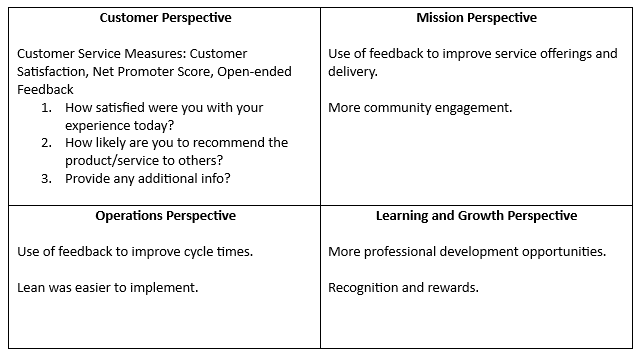Improving customer service is a simple concept that all employees can understand. We are all customers. Customer service is about treating people how you would like to be treated. Treating people how you would like to be treated is also the foundation for nearly every faith around the world. This is a story about how improving customer service in government agencies improves all-around performance.
I had always used performance measurement, process improvement, and technology modernization to lead transformations. Think logic modeling, lean, and data analytics. Some transformations were more successful than others. I had learned long ago that performance improvement transformations are human-centered and was searching for an approach that people would buy-in on better. Enter customer service.
My role as a leader of a state’s customer service initiative: As we implemented it, I got to see first-hand exactly how much of an impact it was having on improving performance. It was transformational. I was not expecting it. Here is what happened.
We facilitated customer service values workshops with government agencies. Together, the state employees identified the following values-based principles: friendly, courteous, timely, responsive, accurate, consistent, accessible, convenient, truthful, and transparent. These values became part of the Customer Service Promise. Every agency then received posters of various sizes communicating the values to everyone. Every customer and employee would see the values on the Customer Service Promise every time they walked into any agency.
Every employee then put a simple link to a three-question customer experience survey in the signature of their emails, and customers were encouraged to provide feedback. Every week the feedback was aggregated and routed to agency leadership. Surveys with action items were picked up by leaders and routed to the appropriate department managers for individual follow-ups with constituents.

The third pillar of the program was employee recognition and rewards for outstanding customer service.
Customer satisfaction went from below 70% to close to 90% within 2 years.
The values-based principles encouraged all employees to improve the customer experience. In year 1, we recognized the opportunity to create transformational performance improvement.
The best way I can explain it is by illustrating it on a Balanced Scorecard. Improving customer service was moving the needle in the Customer Perspective and was pulling up the Mission, Operations, and Learning and Growth Perspectives up with it.

Survey feedback was also processed by text analysis software for sentiment data analytics. For example, negative sentiment about certain processes could be identified. Recurring issues could then be targeted for process improvements.
The best part about it was the enthusiasm of employees to participate in improving customer service. Going forward, I will always lead transformation efforts with improving customer service. Transformation efforts that are led by customer service establish a winning attitude. Let the Customer Perspective help raise the bar for all perspectives on a Balanced Scorecard.
Mike Morello
Management Consultant
Founder, QC




